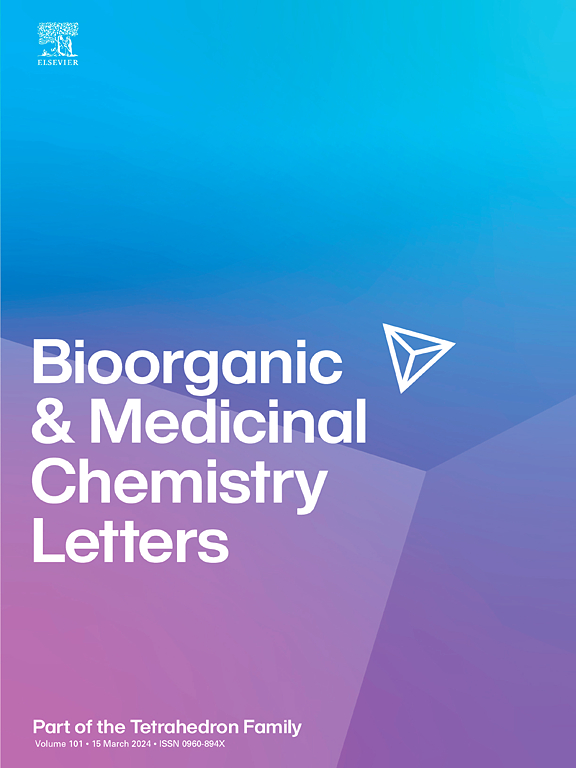β-羰基苯并呋喃杂合物抗金黄色葡萄球菌的设计与合成。
IF 2.5
4区 医学
Q3 CHEMISTRY, MEDICINAL
引用次数: 0
摘要
金黄色葡萄球菌(MRSA)造成的重大威胁归因于各种抗生素耐药性及其在严重感染中的作用。为了解决这一问题,我们设计、合成了一系列新的β-羰基苯并呋喃分子杂合体,并对其对金黄色葡萄球菌ATCC 29213的抑菌活性进行了评价。其中,关键化合物13e、13 h和13q的最小抑制浓度(MIC)为4 μg/mL,环丙沙星的最小抑制浓度为0.125 μg/mL。对接结果也支持了有效化合物抑制DNA回转酶的能力。这些化合物在较高浓度下表现出抑菌作用,显著抑制生物膜的形成(MBIC50范围为12.78 ~ 30.68 μg/mL)。此外,这些化合物对HepG2细胞表现出最小的细胞毒性,并抑制DNA旋切酶,这已被DNA超螺旋实验和分子对接研究证实。此外,ADMET预测显示了有利的类似药物的性质,符合利平斯基的五项规则。这些结果表明,合成的β-羰基-苯并呋喃复合物具有开发新型MRSA抗菌药物的重要潜力。本文章由计算机程序翻译,如有差异,请以英文原文为准。

Design and synthesis of β-carboline-benzofuran based hybrids as antibacterial agents against Staphylococcus aureus
The significant threat posed by Staphylococcus aureus (MRSA) is attributed to various antibiotic resistance and its role in severe infections. As an approach to combat this, a series of novel β-carboline-benzofuran based molecular hybrids were designed, synthesized, and evaluated for their antibacterial activity against Staphylococcus aureus ATCC 29213. Among the series, the minimum inhibitory concentration (MIC) of key compounds 13e, 13 h, and 13q was determined to be 4 μg/mL, compared to ciprofloxacin 0.125 μg/mL. The docking results also supported the potent compounds' ability to inhibit DNA gyrase. These compounds demonstrated bacteriostatic effects at higher concentrations, with significant inhibition of biofilm formation (MBIC50 ranging from 12.78 to 30.68 μg/mL). Additionally, the compounds displayed minimal cytotoxicity against HepG2 cells and inhibited DNA gyrase, which is proven by DNA supercoiling assays and molecular docking studies. In addition, ADMET predictions indicated favorable drug-like properties, adhering to Lipinski's rule of five. These findings suggest that the synthesized β-carboline-benzofuran hybrids possess significant potential as leads for developing new antibacterial agents against MRSA.
求助全文
通过发布文献求助,成功后即可免费获取论文全文。
去求助
来源期刊
CiteScore
5.70
自引率
3.70%
发文量
463
审稿时长
27 days
期刊介绍:
Bioorganic & Medicinal Chemistry Letters presents preliminary experimental or theoretical research results of outstanding significance and timeliness on all aspects of science at the interface of chemistry and biology and on major advances in drug design and development. The journal publishes articles in the form of communications reporting experimental or theoretical results of special interest, and strives to provide maximum dissemination to a large, international audience.

 求助内容:
求助内容: 应助结果提醒方式:
应助结果提醒方式:


